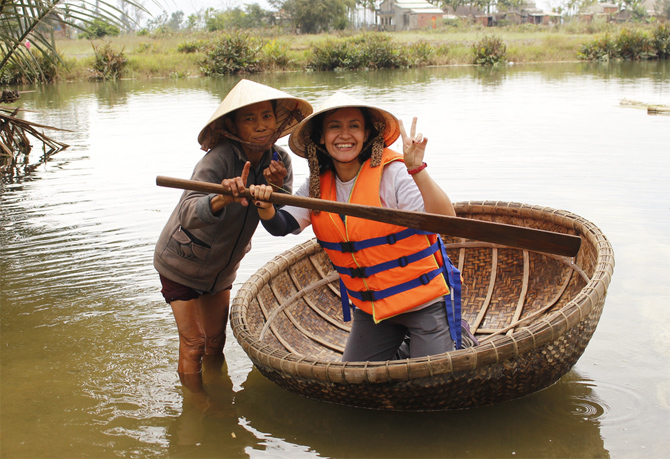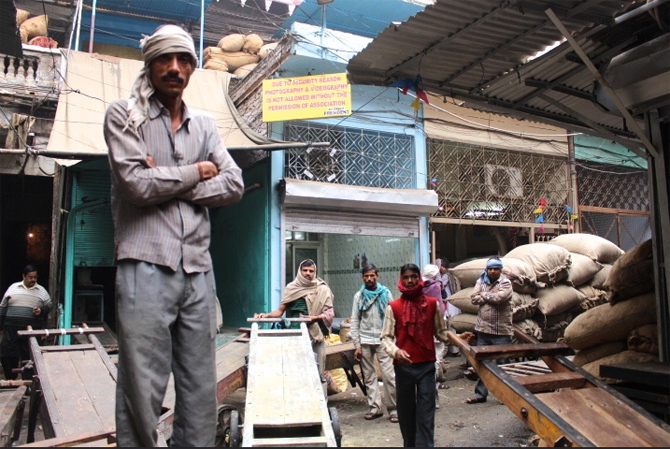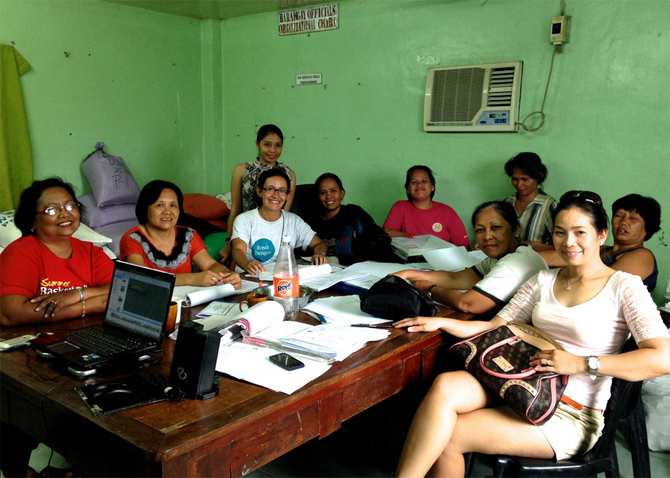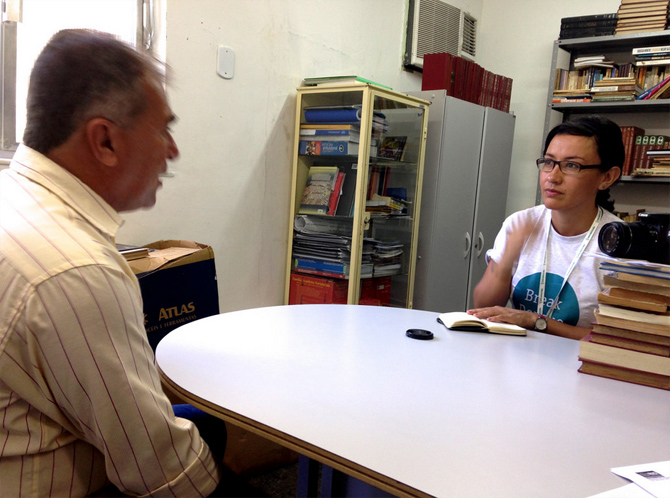Seven countries, six months, and a number of planes, trains, and automobiles (or whatever passes for a vehicle), that was my life as a blogger/collaborator of an online initiative called Break Dengue.
My mission was to go off on my own to find and visit local initiatives (civil society projects, governmental programs or information awareness campaigns) in India, Thailand, Cambodia, Vietnam, the Philippines, Singapore, and Brazil. But not just any local initiative, they had to be actively involved in combatting dengue fever. I would then report their stories on the blog.
And on the side, I was also collecting information for my master’s thesis on development and new media. My objective was to analyze how, despite the Internet’s minimizing effect of complex development issues into the number of “likes,” “shares,” and “followers,” it also increases people’s awareness on these issues that would otherwise be unknown by many. Furthermore, new media, also known as Web 2.0, can also transform the Internet into a platform of action, where actors gather to collaboratively find solutions to global development issues.
What this travel blogger learned

Impact can’t be measured only in terms of “likes,” “web visits” or other social media metrics
Dengue, as with many other issues affecting mainly the southern hemisphere, is having great resonance in western countries for a variety of reasons. While there are good intentions, there’s also the balance in the pursuit of economic and marketing benefits for those with products that can combat the disease and those leading the research in finding vaccines or therapies.
And while initiatives are created with the intention of raising awareness, their impact is sometimes considered as shallow when their measures of success are reduced to the number of “likes,” “followers,” and “clicks,” and not by real impact created on the ground.
The web offers the opportunity to create websites where people gather online to join a cause, which in a lot of cases pushes the topic in government’s agendas. Creating an online platform to advocate a certain issue is an opportunity to lead the conversation in that particular field (which is one of the reasons why Break Dengue was created). But if not done well, this necessity of control could bring another problem altogether: the paternalistic representation of the North towards the South and revived ideas of colonization.
The main objective of these online initiatives should be the authentic interest of creating a network of people involved in the issue, where the result of exchanging information and experiences can be only positive for all involved. I firmly believe that a network of people can generate more impact than the disconnected efforts of individual groups.
One thing is true: new technologies offer the possibility to extend the reach of a message on a much larger scale to a seemingly vast number of people, creating networks of collaborators that would otherwise not be able to gather (due to geographical constraints). And it makes logical sense that the next step for all these people is to understand what their roles would be in the discussion to find a solution to the issue.

Who is talking and who is listening?
Who is talking and who is listening is crucial to creating a collaborative online platform that works. It is also one of the most important challenges in using the Internet for social change
The digital component of the communication efforts in the local initiatives that I visited in Southeast Asia and Brazil is becoming an essential of communicating and sharing their work with others. These initiatives – not all of them – use websites, blogs, and social media channels in order to share their information. They use them because they want to have a “voice” in the digital environment.
However, in most cases, the information available online is static. There’s minimum effort to encourage the conversation online and create an effective collaborative online network. Language barriers, basic and outdated information, and also time constraints to participate online are some of the reasons behind this limited participation.
The value of an online community for social change is where the exchange of information (needs and offers) of all the actors involved is happening. The true value is not only in the number of people convened but also in what all these people make of this “reunion.” Which is why making a platform a participatory tool is also a challenge.
Creating a global network of different local knowledges

With health workers in Tacloban, Philippines, after super typhoon Yolanda
The value of gathering multiple local knowledges is an important element when it comes to global networks created in the Internet. As the Colombian anthropologist Arturo Escobar pointed out, “local knowledges are complex cultural constructions, often with different modes of operation and relations to social and cultural fields.” A successful initiative in development attempts to recodify this local knowledge with the aim of increasing the chances of success for development, rather than the intervention of external development agendas with the aim of changing local knowledge.
Media and communication technologies are useful mechanisms for achieving levels of participation that are hard to achieve in wider development practices when recognized as tools to understand local knowledges. This local context may bring different approaches to tackle the same issues.
In my fieldwork experience, I noticed, for example, how in Cambodia the project for mosquito control in rural areas needs to address a recurrent problem: people don’t go to hospitals because they prefer to consult informal health practitioners in their village (whom in some cases might treat dengue as a common flu). Relying on informal health practitioners might jeopardize the real number of dengue cases recorded in the country, not to mention putting at risk the lives of many villagers.
On the other hand, in some of the villages most affected by super typhoon Yolanda in Tacloban, Philippines, support of hundreds of international development aid organizations was received at the moment of the emergency. Some of these organizations dedicated to health sanitation helped with control of diseases, water purification, and access to vaccines and medicines. However, a year after the disaster, assistance has been reduced considerably, and today, Tacloban needs extended support to continue cleaning the areas at where mosquitoes could breed. Dengue, diarrhea, and Chikungunya are the most common diseases the Philippines is combating today.
Each of these examples, although tackling the same issue (combatting dengue) has a different objective. Both Cambodia and the Philippines focused on different communication campaigns to address these two concerns: healthcare practitioners and cleaning risky areas. Most of their initiatives contemplate specific activities to raise awareness about these problems. An external attempt to help these two countries would require a careful analysis of their internal reality and working together with the people in charge (this is crucial) to channel the resources they need.
I believe that new media can help in the understanding of these realities, so long as the local knowledge is carefully taken into consideration and the solutions found are customized to each particular case. The big role is to be prepared to accept and respect alternative knowledge and knowledge practices, which in some cases may be contradictory to the dominant beliefs of doing things.
The future of the Internet for social change
There is no doubt that new media is becoming part of different social initiatives that are attempting to solve some of the most common development problems in the world today. Among the strategic requirements specified in the Rome Consensus developed by the World Congress on Communication for Development (2006) are: access to tools so that people can communicate amongst themselves and with decision makers; recognition of the need for different approaches depending on different cultures; and support to those most affected by development issues to have a say.
As I pointed out earlier, people, organizations, and institutions have a “voice” and in a world connected by the Internet, there should be attempts to “listen” too. This will only turn the web into a better opportunity for discussion and collaboration.

There’s a high risk of creating skepticism when global online initiatives intend to help “other” realities without proper contextualizing of the local issues. This happens when these online groups suggest solving the issues of our “global village” through actions purely motivated and coordinated online. The danger of doing this is that it alienates the people who cannot access this “online playground,” and they miss out on valuable information. What’s online must also be coordinated offline, on the ground. There has to be a 360 degree approach.
Aside from the point of “global digital divide,” online communities work in different spheres: awareness/advocacy, organization/mobilization, and action/reaction. These are the same fields of action that social grassroots organizations work on locally; and in most of cases, these online initiatives have little time or intention to include them in the game. On the flip side, there are many social organizations that don’t see Internet activism as an important ally for their causes. And so we find ourselves in a situation with thousands of problems: many people willing “to do something” and little coordination between all the actors who can make a significant change in actuality.
What everyone needs to think about is how to encourage active participation, one that fosters speaking, listening and doing that is mediated by different institutions and organizations. This is central to participatory development and one of the key principles of the Web 2.0. And when this happens, and everything is pulled together beautifully, then perhaps the world can be a much better place. For everyone.











